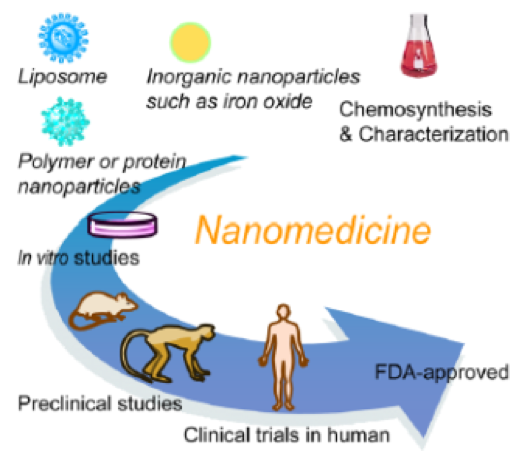Nanomedicine Technology
Nanotechnology is a practical application of technology that uses physical cutting, chemical synthesis, and other methods to achieve the control of the structure and shape of objects to attain nanometer size. Nanotechnology is a cross-disciplinary technology, so the fields of its applications cover various industries, including chemistry, energy, machinery, electronics, biology, medical treatments, pharmaceuticals, beauty, etc. In the field of medicine and health, nanobiotechnology possesses a wide range of applications and apparent industrialization prospects, especially in drug nanotechnology, nano drug carriers, nano biosensors, imaging technology, miniature smart medical devices. It also plays a critical role in disease diagnosis, medical treatments, and health care.
In terms of enhancing drug absorption, establishing new drug control systems, improving drug delivery, replacing viral carriers and designing adjuvant drugs, nanotechnology has provided novel solution for the development of new drugs and carriers, while being able to overcome challenges that could not be solved by traditional drugs or techniques.
The application of nanoparticles in pharmacy can be divided into nanomedicines and nanocarriers. After a drug is minimized to nano size, its bioavailability, uniformity, dispersion and absorption can all be increased. The application of nano drug delivery can make insoluble drugs soluble in water, provide different routes of drug administration, or change the kinetic characteristics of drug absorption, distribution, metabolism, excretion, and even achieving the functions of slow release transmission and targeting effect. The development of nano medicines in recent decades has played an important role in medical and health care. At present, more than 200 nano drug products have passed the validation from the Regulatory Agency or are in the processes of clinical trials.
When drugs are combined with an appropriate nanocarrier, the release of the drug can be controlled at a specific target organs or moleculars according to the needs of treatment. Nanocarriers provide a new method for the study of controlled release of drugs with its small size and large surface area effects. The ideal nanocarrier should have the following properties: higher drug loading, higher drug encapsulation efficiency, simple preparation and purification methods, and easy to scale up to industrial production. The carrier materials should be biodegradable, low toxicity, with proper particle size and shape, while having a longer circulation time in the body. In recent years, there are many different nanocarriers systems has been developed based on different drug properties and preparation methods, including nanoparticles, nano-structured liposomes, solid lipid nanoparticles (SLP), nanosuspensions, magnetic nanoparticles, etc.

